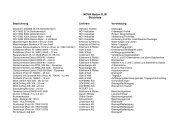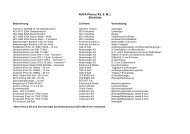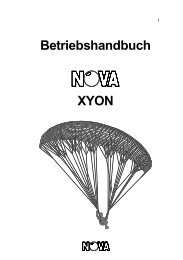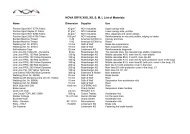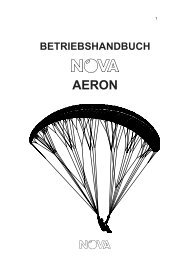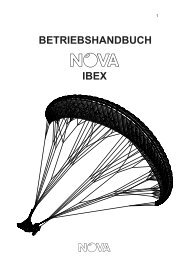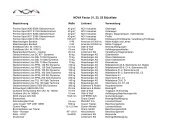Version 1.0 01/06/2011 - Nova Paragliding
Version 1.0 01/06/2011 - Nova Paragliding
Version 1.0 01/06/2011 - Nova Paragliding
You also want an ePaper? Increase the reach of your titles
YUMPU automatically turns print PDFs into web optimized ePapers that Google loves.
much, the glider will enter a Full Stall. If you release the brakes too much, the<br />
glider will go back to normal flight. To practice a Deep Stall, it is necessary to<br />
master the Full Stall first.<br />
A very old or worn out glider with a porous cloth or with a changed trim (due<br />
to many winch launches, or deep spirals) might stay in a deep stall even after<br />
releasing both brakes. Do not apply the brakes in such a situation, because the<br />
wing would then enter a full stall ! You can exit the deep stall by pushing the<br />
speed bar, or by simply pushing the A-risers forward. If you fly through rain,<br />
the risk of a deep stall is higher. We strongly advice against flying in rainy<br />
conditions. If it happens, that you get into rainfall, we recommend not<br />
performing a B-stall or Big Ears. Our recommendation is to leave the rain as<br />
soon as possible and to fly with both brakes released, or even accelerated, as<br />
this reduces the risk of a deep stall. (The available brake travel before entering<br />
a deep stall may be reduced significantly.)<br />
Cravates<br />
After a big collapse or after a badly executed Full Stall, a part of the wing<br />
might be tangled up in the lines, and won’t reopen automatically. This is what<br />
you call a cravate. During our extensive test flights with the FACTOR 2 we<br />
never experienced a cravate but this situation cannot be eliminated with any<br />
paraglider.<br />
In case of a cravate we recommend the following actions:<br />
1.) Counter steer: Probably the wing wants to turn to the side of the<br />
cravate. In some cases, the turning happens quickly and will end in a<br />
stable deep spiral without the pilot’s action. So it is important to react<br />
quickly by counter steering.<br />
2.) Opening the cravate by applying the brake with an impulse movement:<br />
Some cravats can be opened with this method. It is important to keep<br />
the wing in straight flight by pulling the other brake all the time.<br />
3.) Pulling the stabilo line: Some cravats can be opened by strongly<br />
pulling the stabilo line. (It is the orange line on the B-riser. Have a<br />
look at it or grab it every once in a while and you will be able to react<br />
quicker in a moment of danger.)<br />
Vers.<strong>1.0</strong><br />
0<strong>1.0</strong>6.2<strong>01</strong>1 S. 19 / 39





